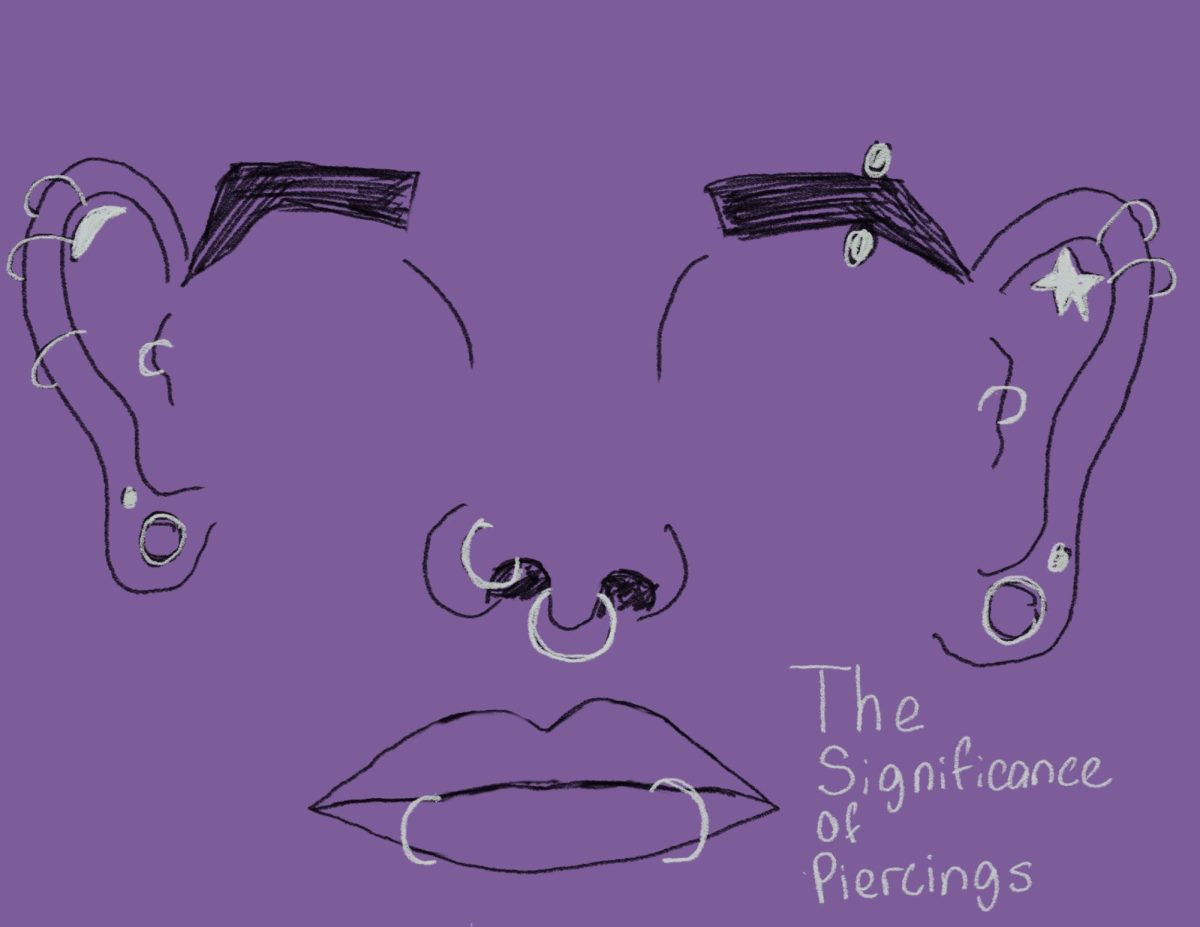Piercings, whether it be facial, ear, or body are a cultural phenomenon in America. But why are piercings so popular? What is the history behind piercings and their significance?
Earlobe piercings are the earliest evidence of piercings, dating back to 5,000 years ago. This piercing belonged to a mummified person frozen in the Austrian Alps. but piercings also have cultural significance that can even be deemed as essential in some cultures. It is assumed that the earlobe was the easiest place to pierce with limited skills and technology.
“The first ear piercings arose amongst primitive tribes for magical purposes. Believing that demons and spirits were repelled by metal, the tribe wore metallic ear piercings to prevent the penetration of bad spirits.” (Tribu)
For native americans, Aztecs and Mayans, they often pierced their tongues as part of a religious ritual they buried that brought them closer to God. Many tribes also used septum piercings as a way to intimidate tribal opponents.
But, in a fashion we can relate to more today, during the renaissance, earrings became popular especially among nobel men to show wealth and status. The jewelry often consisted of pearls and diamonds.
This shows the cultural significance to having piercings. Nowadays, piercings are seen as more of a decorative body modification.
During the punk movement of the 70s and 80s, piercings became a large part of their culture. Piercings were used to express personalities, and association with the movement. They were also used to intimidate people who were not a part of the movement, and therefore also condemned the culture associated with punk.
Piercings are also often associated with the LGBTQIA+ community and were an easy way for people to “tell if someone was gay”. This led to many discriminations and hate against people with piercings as many people assumed they were part of the LGBTQ community even if they were not.
There are multiple incidents of nurses and doctors turning away accident victims if they had piercings. Doctors in the 1980s would turn away men with piercings assuming they were gay and therefore had AIDS. That is a gross misconception that leads to many deaths simply because people were perceived as “gay”.
In the 80s and 90s, having piercings like nose piercings, multiple ear piercings, and other body piercings were seen as rebellious and often adopted by the art community. It was a way for people to express themselves.
Now, anything more than the simple single earlobe piercing can be seen as unprofessional. Many employers, all though not allowed to discriminate, subconsciously are less likely to hire people with facial piercings. “In hiring, managers may see people with facial piercings as a poor fit for a job because facial piercings may be associated with negative personality traits” (Psychological Science).
There are also believed medical benefits to piercings. Some people believe that having certain piercings in certina points are able to reprieve anxiety, stress, and migraines. It’s seen as a form of acupuncture therapy, this practice is called Daith piercing. “It has been reported that the pierced spot relieves migraine and tension-type headaches by activating vagal afferents”(National Library of Medicine).
Many people have ear and nose piercings, it has become a much more mainstream practice, and the true cultural significance is often forgotten.


